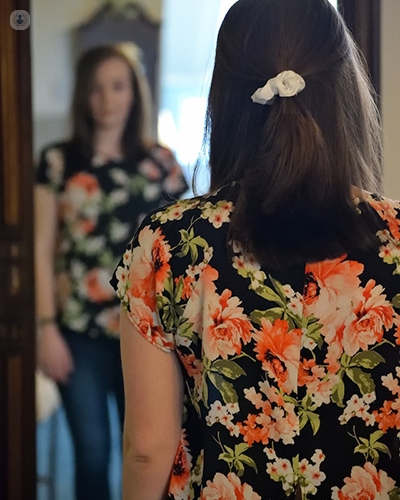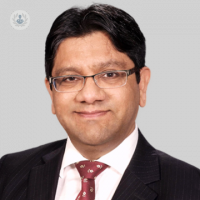Breast augmentation: An all-you-need-to-know guide
Escrito por:Sometimes called a ‘boob-job’, a breast augmentation or augmentation mammoplasty is a surgical procedure in which breast implants are used to optimise the symmetry, fullness and projection of the breasts, as well as to increase their size. In this expert guide to breast augmentation, renowned consultant plastic surgeon Mr Muhammad Javaid offers detailed insight on the differences between different types of breast implant and what patients can expect from the recovery period following surgery.

What are the aims of breast augmentation surgery?
Breast augmentation surgery has been the most commonly performed aesthetic procedure in the UK for many years. There are a number of reasons patients may wish to undergo a breast augmentation procedures, including:
- to enlarge smaller breasts, which often run in families
- to restore the fullness of breasts, which can be lost after pregnancy as result of breastfeeding or weight loss
- to correct asymmetrical breasts which noticeably differ in size or shape
Breast augmentation is a highly popular and well-established procedure, which allows women to achieve their desired results and helping them to boost their confidence.
How are the implants positioned in a breast augmentation procedure?
In a breast augmentation procedure, implants are placed either underneath the breast tissue or behind the pectoral muscles (which the breasts rest upon). In my own practice, I prefer to position the implants behind the breast tissue in the majority of patients, as this gives the most natural looking results.
In most cases, neat incisions are made in the natural curve under the breast (also known as the inframammary fold). In other cases, according to the patient’s anatomy or preference, the scale of enlargement or the type of implant, incisions may be made in the armpit or around the areola or nipple.
Which types of implants are available?
There are two commonly used types of breast implant, which differ according to the inner material which fills them; silicone gel and saline solution. Implants can also be round or tear drop (anatomically) shaped according to the patient’s preference.
Silicone implants are either teardrop shaped or round and are filled with an elastic gel which simulates the movement and touch of the breast’s natural tissue. If the implant leaks, the gel remains within the shell of the implant itself or its pocket. I most often use Ergonomix implants which adapt to a round or tear drop shape depending upon the patient’s position and posture or anatomically shaped (teardrop) cohesive gel implants which have a lifelong manufacturer’s guarantee to give my patients peace of mind as well as excellent results. During our preliminary consultation, we can establish what type of implant is right for you, according to your personal preference and the results you want to achieve.
Saline implants contain sterilised salt water rather than a gel and are not very popular nowadays due to their unnatural feel.
Manufacturers occasionally produce new styles and types of implants so some alternative options are sometimes available. The use of silicone implants is well established and they have been widely recognised as safe and unlikely to cause any complications.
What is the recovery period like after breast augmentation surgery?
The recovery process following breast augmentation is relatively smooth and most patients are discharged either the same day or after an overnight stay in hospital. Patients should expect some pain, bruising and swelling following the surgery and they may also experience some tightness of the chest and restriction in breathing. Patients may also experience a painful hardness of the breasts and twinges in the area as well as general discomfort. These are normal side-effects and will resolve themselves in the weeks following the procedure. Pain killers are prescribed to help patients manage any discomfort.
Plenty of rest is required for a speedy recovery and we advise patients to relax in a semi-upright position as this optimises comfort and helps to reduce swelling. It’s also important to avoid using or moving the arms and chest excessively as this can cause bleeding or irritation.
Over time, swelling and scarring will fade and we advise patients to wear a specially designed support bra for around four to six weeks following surgery. Although you can most likely return to work after one to two weeks, it’s important to attend a follow-up consultation before resuming regular activities and exercise.
What types of results can patients expect?
After surgery and the short term recovery period, the final results of the procedure will be visible from between two and six months once swelling has dissipated.
Generally, patients enjoy long-lasting results following a breast augmentation procedure. Obtaining their desired appearance helps women to feel more confident and boosts their self-esteem. It’s important to be well informed about what type of results you should realistically expect to ensure you are satisfied.
It’s also vital that patients understand that having a breast augmentation does not affect the natural ageing process, meaning that drooping or other changes to the breast’s appearance can occur with time. Treatments such as breast uplifting or an implant exchange can help to improve the prominence or shape of the breasts if they are affected by the ageing process.
If you think a breast augmentation could be right for you and wish to discuss your options further, you can schedule a consultation with Mr Javaid by visiting his Top Doctors profile.


